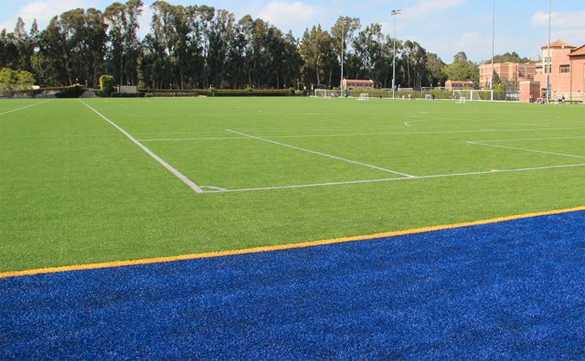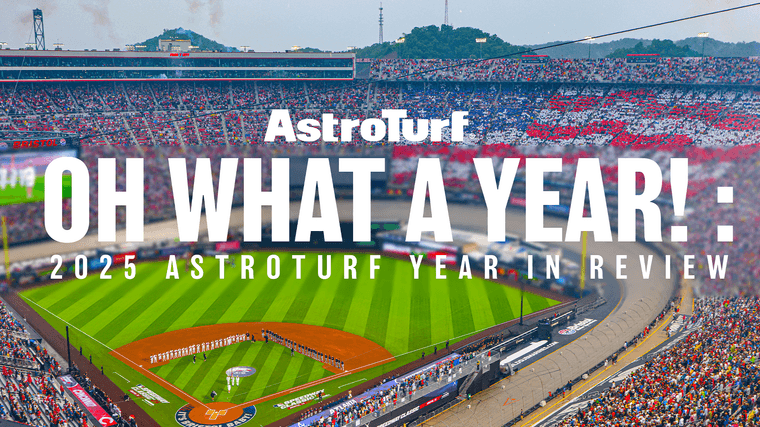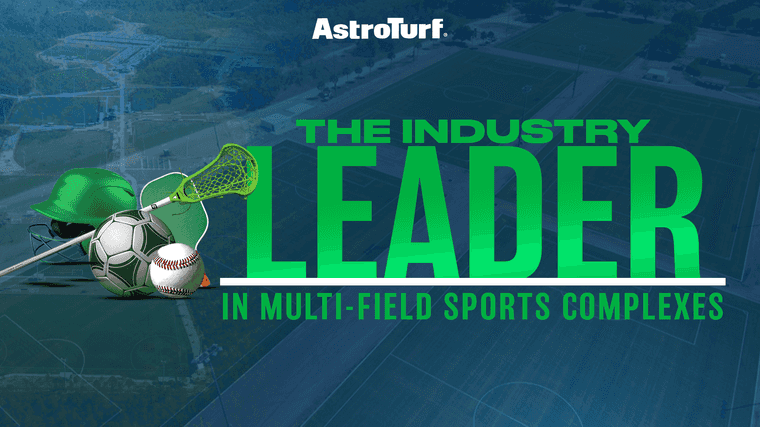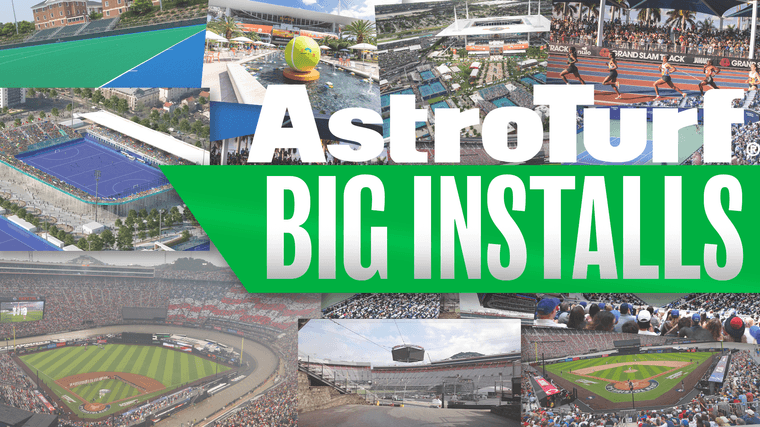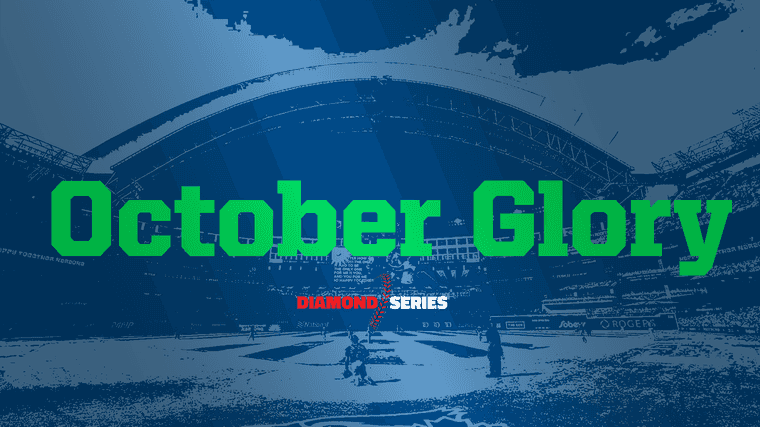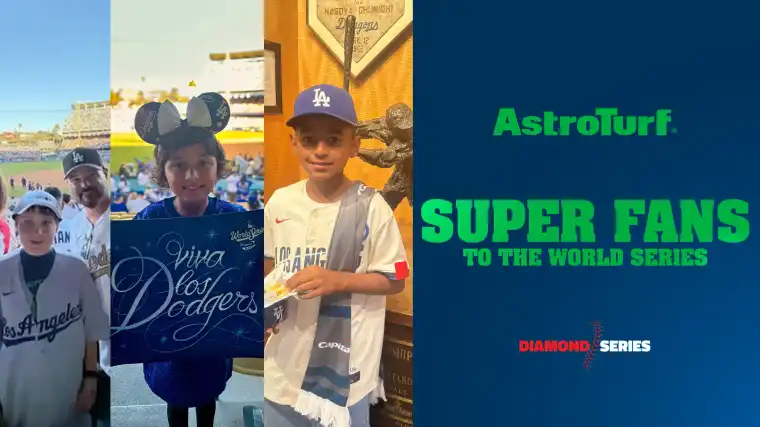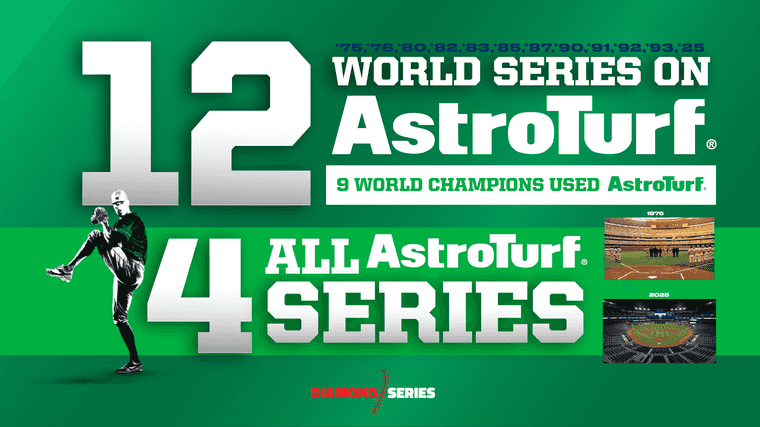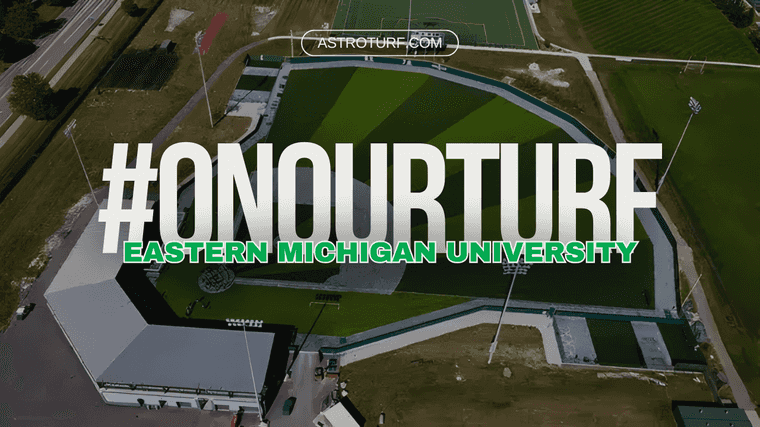In the middle of the University of California, Los Angeles campus is the nearly eight acre Intramural Athletic Field (IM Field). In the summer of 2015, UCLA installed biobased AstroTurf in the previously sod IM Field. This change will save 6.5 million gallons of water each year and allows for 365 days of use for the tens of thousands of students and campus community members involved in recreation and sports at UCLA. The biobased AstroTurf is made with soy-based backing, a product called BioCel™ by Universal Textile Technologies (UTT). BioCel uses polyol derived from soybean oil to displace 60% of petroleum-based polyol in AstroTurf.
The project vision began about ten years ago, according to Mike Deluca, Assistant Vice Chancellor for Campus Life at UCLA. Over the years, the university had noticed both an increase in enrollment and also the growing concerns about water usage in California. Width 42,000 students, there was a high demand for use of the IM Field. In addition to intramural sports, drop-in recreation, and other student activities, fourteen field based club sport team as well as the UCLA Marching Band use the field weekly. In is also heavily used for summer camp programs, and large special events like the 2015 World Special Olympic Games.
Previously, the grass field had to be closed for up to four months a year for reseeding and maintenance. It also required the application of pesticides and fertilizers, and regular watering. The need for a safe, playable and sustainable field was clear to the University. Deluca says that the IM Field provides multiple benefits, “it is a significant sustainable practice through water savings, it is an urban location that will give 35% more field use in the same amount of acreage, and it becomes the showcase of activity and inclusion through student and community events.”
The IM Field turf project was the result of a number of partnerships across the University including Facilities, Recreation and Housing. “The benefits were seen at so many different levels on campus that our partners in housing and facilities, knowing that we’d be saving [water] and knowing that we’d have a field that gives us twelve months of playability, worked together to support funding and planning the project,” said Rich Mylin, Director of Recreation Sports Venues at UCLA.
Because of the field’s central location on campus, UCLA Housing contributed to funding the project, acknowledging the importance of have a large open green space that reflected the values of water conservation, active lifestyles and sustainability. “Our view of sustainability is everything from being healthy, to making healthy choices, to recycling, to saving and managing resources accordingly, so there is a blend in how the University sees that an active lifestyle is a part of the sustainability practice that we try to emulate and teach here on campus,” said Mylin.
The IM Field includes three components – the AstroTurf, the infill and an additional padded base to add cushion which makes it safe and playable. While the BioCel AstroTurf is the only biobased component, the infill and the padded base are both sustainable as well. The Brock pad base is a certified cradle to cradle product make of recyclable polypropylene. The infill is a USA made crumb rubber that is made of postconsumer recycled tires.
The Brock Pad not only makes the field safer and more sustainable, it also increases the overall lifespan of the field. UCLA expects the field to last 8-10 years before needing replacement. Each component of the field was deeply researched to ensure the safety of students and community users. “All those integrated values [of safety, playability, and sustainability] were the drivers in us choosing the right product. We wanted to make the right statement and make this an investment rather than just an immediate need item.” said Deluca.
The project cost $4.5 million and took two years from beginning to completion. The LA Department of Water and Power provides a rebate for water conservation for which the university was able to quality. By doing this, the University earned a rebate of $697,604 for the project. While there is still maintenance associated with the AstroTurf field, both Deluca and Mylin expect the costs to decrease as compared to a sod field. “It’s the lack of fertilizer, no seeding, no sharpening the blade of a lawn mower, a lot of the expense you have of keeping grass alive is where we’ll see our largest amount of savings,” said Mylin.
Biobased turf is a fairly new product which means there is little historical data. To learn more, the UCLA team visited other PAC12 schools that had implemented artificial turfs like Oregon State University and Washington State University. UCLA contracted D.A. Hogan & Associates, a consulting group focusing on engineering and landscape architecture, to help them navigate the project. One difference between Washington State University and UCLA is the effect of UV light. Deluca will be keeping an eye on how the turf responds to the constant California sunshine.
Some other schools in the LA public school system have had problems with their infill, including melting which result in the turf turning almost to pavement. The UCLA teams researched their infill options and are confident they will not have this problem with their infill and the heat. Mylin also emphasized researching the specific needs of a project, “Pick what is going to make your space the most safe, playable, and sustainable. I would hope people are always looking at what the product is made of, what the lifecycle is, and how it gets recycled before you buy it. Don’t just thing about what you’re going to use but how it’s going to be used.”
Looking forward, UCLA has plans to incorporate BioCel AstroTurf into other areas of campus. There are discussions about converting some of the parkways and small areas and courtyards throughout the campus. Deluca promotes the idea of sustainable space use, “that by creating the right built environment and the right products which provide savings, we could also enhance the campus.”
Deluca mentioned that in El Nino years when California gets more rain than usual, grass areas around campus get worn down and it can take those spaces out of commission for weeks to months at a time. “If we inserted some sort of natural products, some hardscapes, and a turf product we could get 365 days of use out of it.”
The UCLA IM Field offers a space for recreation and activities that also showcases the university’s commitment to water conservation and sustainability. “In addition to being a statement on preserving resources for future generations, in our case I think applications like this embed the values of an active healthy lifestyle which benefits the youth, the country, and it really becomes both a sustainable initiative and health initiative,” said Deluca.
Former student and current Sustainability Coordinator of Recreation Sport Venues Katie Zeller added that the location of the field, in the middle of campus is important as well, “It is something to be proud of because it is very much a visible space. Students pass it all the time – even if they don’t use it. It’s definitely something you can’t miss.”
Article Courtesy of George Washington University
